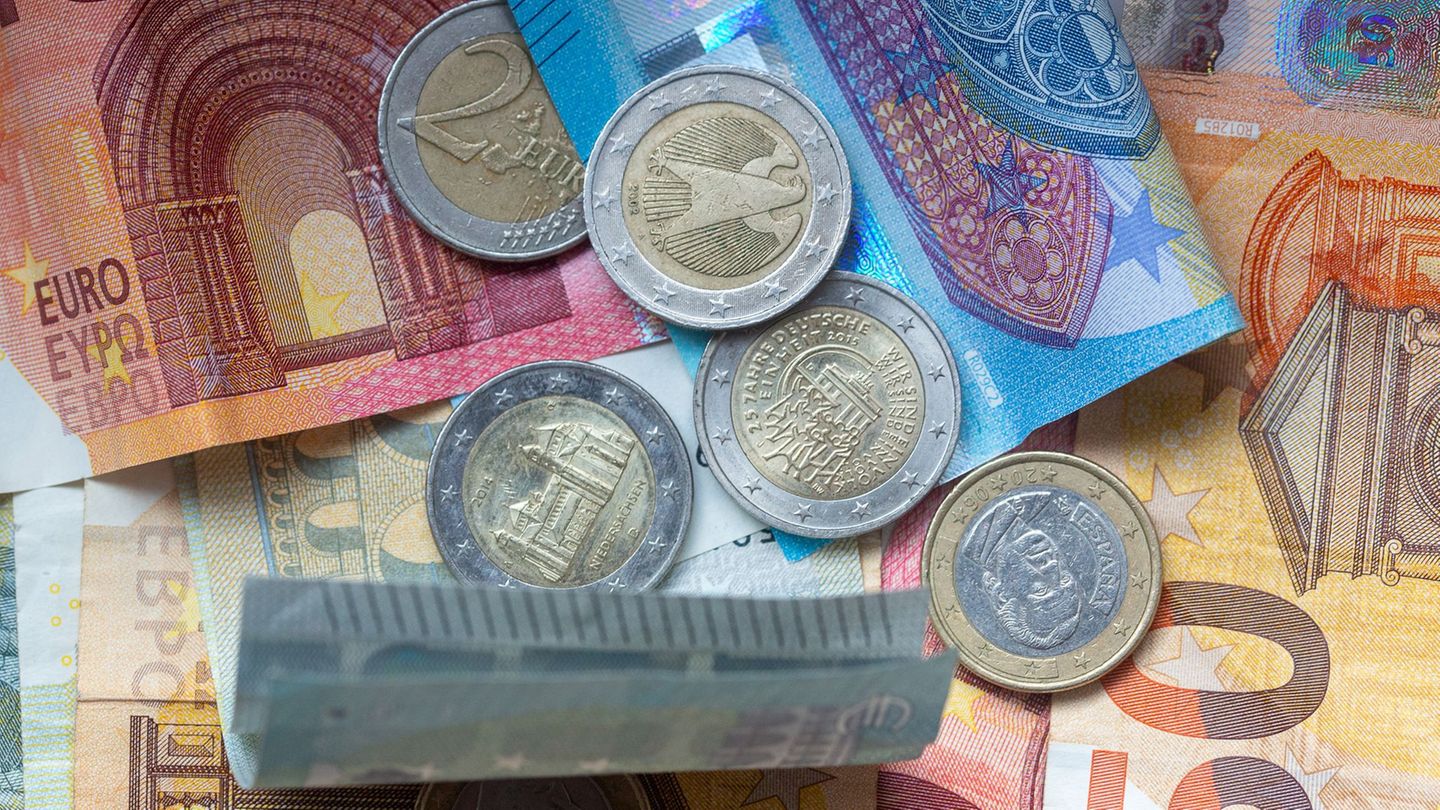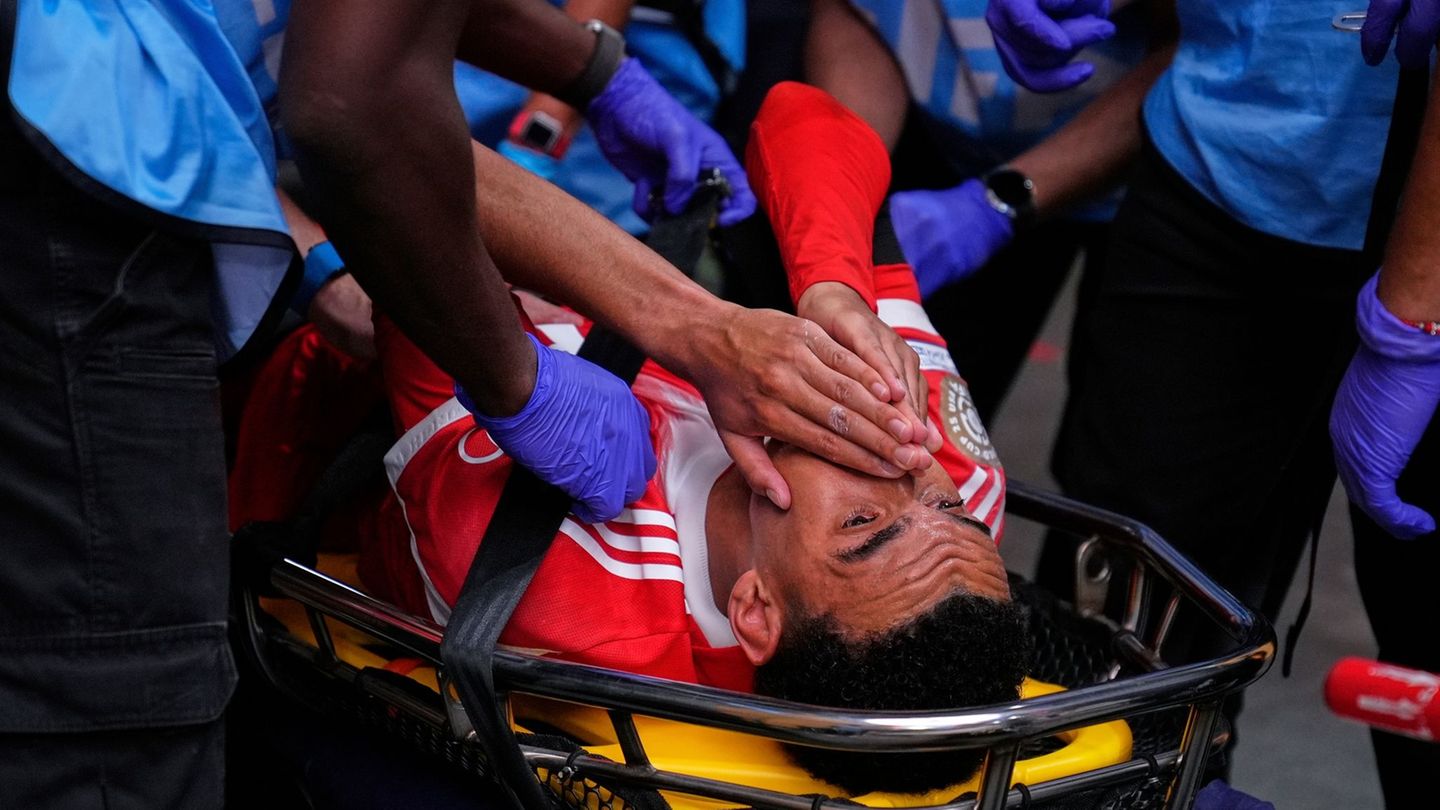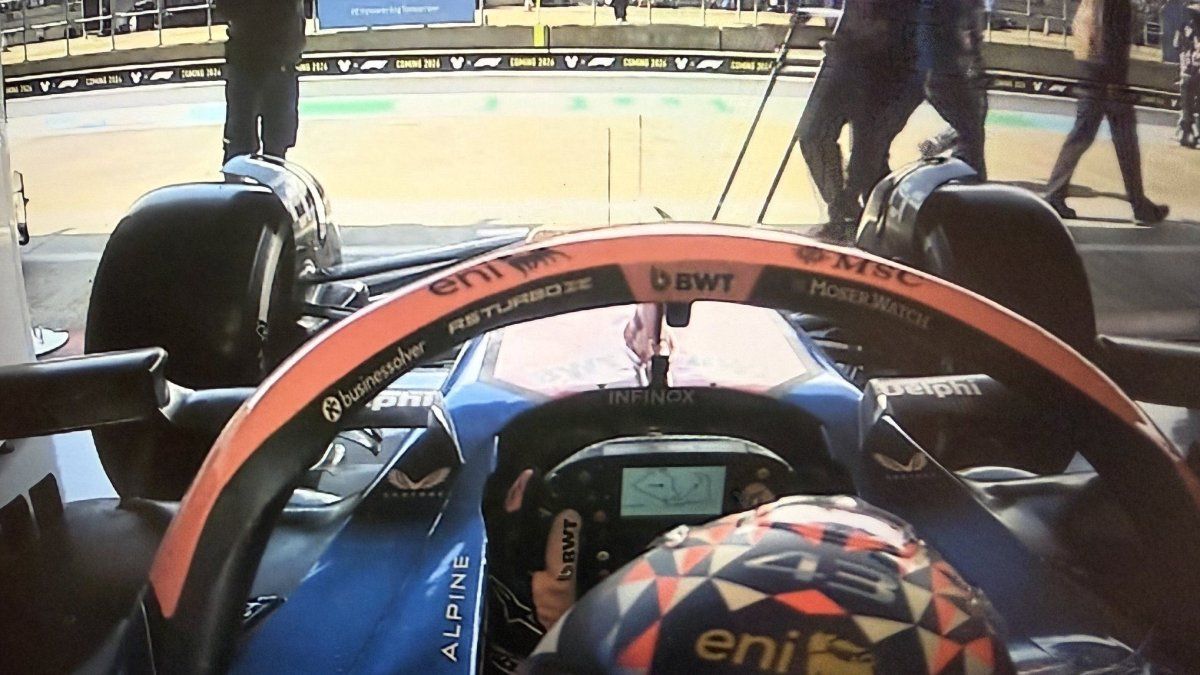Bundestag election
A clear favorite and many open questions
Copy the current link
Add to the memorial list
The election campaign was wild, but he hardly changed anything on the surveys. Merz goes to the Bundestag election as a clear favorite. The formation of government is likely to be difficult. But time is pushing.
Even if the situation appears hopeless, Chancellor Olaf Scholz still finds a way to encourage himself and his SPD. “This time, as with no choice, many will only make their decision in the electoral cabin,” he says safely. “And I think many say: that should be Olaf Scholz again.”
Purpose optimism and perseverance slogans is the only thing Scholz remains on Sunday until the election decision on Sunday. The story of his legendary catch -up from 2021 can no longer be heard from him. At that time, like now, he had started the election campaign with about 15 percentage points, overtook the Union weeks before the election day and then brought a narrow lead over the finish line. This time the winter election campaign was wild, but the deficit was frozen. Almost nothing happened from the new election decision in November until today.
Union Chancellor candidate Friedrich Merz (CDU) therefore already appears like the safe election winner. At the Munich Security Conference, he was greeted as a “chancellor” by a moderator last weekend. In television debates, he lets the Scholz attacks be stunned by the state. And he meticulously prepares for government formation the day after the election. “We have already made preparatory work for several scenarios here in the Adenau Haus, which are also fixed in writing,” he said recently “Politico”.
Preferably in pairs: black and red as the most likely option
How difficult government formation will be depends on how many parties come to the Bundestag. Four parliamentary groups will surely belong to the new parliament: CDU/CSU (27 to 31 percent in the surveys of the current week), AfD (20 to 21), SPD (15 to 17) and the Greens (12 to 14). Linke, FDP and BSW wrestle with the five percent hurdle. If no or only one of these three parties comes to the Bundestag, the chances are good that it will be enough for a coalition of two. It should be scarce from two.
All other parties have excluded a coalition with the AfD – including the Union. “This is clear and final,” Merz repeated on Wednesday in the television duel of “Bild” and “Welt”.
So two options remain: In almost all current surveys, the Union with the SPD has a majority, in half of all institutes it is also enough with the Greens. With the latter, however, the CSU does not want to rule, which is why coalition negotiations between the Union and the SPD are initially the most likely option.
No self -run: SPD has to sort up
However, she wouldn’t be a sure -fire success. The SPD threatens the worst result in a federal election (so far 20.5 percent in 2017). In such a historical defeat, Olaf Scholz should no longer play a role in such a historical defeat when it comes to government formation or the future of his party.
But the party leadership would also be massive. Will a weakened party leader Lars Klingbeil still lead the SPD into the coalition negotiations? Or does the hour of Defense Minister Boris Pistorius, the still most popular politician in Germany, beat?
Black-green in the hindquarters?
Either way, the SPD will try to push up the price for a coalition. In the end, the result would have to be approved by a party congress or even in a coordination of the members. This will use the party leadership in the negotiations as a means of pressure.
If the Union becomes too colorful, it could still pull the black-green option. In any case, Merz should also talk to the Greens if a two-way constellation with them should be possible-CSU boss Markus Söder or not, which is strictly against black and green. Alone so as not to deliver the SPD’s demands from the outset.
Dreier coalition: traffic light as a daunting example
The Dreiser coalition experiment at the federal level failed with the traffic lights on the first attempt. Therefore, such a model is only considered an emergency solution if nothing else works. Since the FDP has excluded a coalition with the Greens by party convention, only two options remain: a so-called Germany coalition from the Union, SPD and FDP, the liberals should come to the Bundestag. Or black-red-green, also called the Kenya coalition of some of the state colors. For both cases, the following applies: the more sitting at the table, the more complicated it becomes.
It is still open whether the FDP will come to the Bundestag at all. The same fate could happen to her as after her last government participation from 2009 to 2013 under Chancellor Angela Merkel (CDU): failure at the five percent hurdle. It would only be the second time since 1949 that the liberals fly from the Bundestag.
Coalition with left and BSW no topic
The left could cause a surprise. According to the success of the newly founded BSW, she really had nobody really on the screen at the state level. The discussion about the “brand wall” on the AfD and a clever campaign on social media has given her a comeback in the surveys. The momentum of the BSW, on the other hand, fades again.
However, the participation of BSW or the left in a government led by the SPD or the Greens is extremely unlikely. The surveys do not give this out, and Chancellor Scholz emphasizes: “This is not a plan that someone of us has, and that’s why you don’t need to worry about it.”
AfD: winner in the waiting stand
The winners will certainly include the party on Sunday evening, with which nobody wants. According to all surveys, the AfD, which is classified by the Protection of the Constitution, is likely to double their result of 10.3 percent in the 2021 election.
The AfD already had its success in the election campaign. With its help, the Union has given itself a majority in the Bundestag to bring about a decision on migration policy. And party leader Alice Weidel first performed from the Greens in television rounds with the Chancellor candidates Scholz, Merz and Robert Habeck.
The AfD has become a bit socially acceptable – and is based on the fact that it can become the strongest force in the next election. For the parties in the middle, it will be important to prevent that in the next four years. Many are mentioned as a prerequisite for many: a coalition without a permanent dispute and grave battles – differently than the traffic light has shown.
Time pressure: The world is reorganized – without Germany
In any case, as rarely before, the time urges government formation. For almost four months, Germany has had a red-green minority government that can only be able to act to a limited extent. In the event of an election defeat, Scholz will remain chancellor until a new cabinet was sworn in. After the constitution of the new Bundestag, he is only a managing director of Germany without power. And at a time when the world is dramatically reorganized.
While Germany is sorting, US President Donald Trump will negotiate with Russian President Vladimir Putin about a division of Ukraine. The EU stands helpless and disputed.
Merz is already impatient. He wants the government to stand until Easter – after about two months. “If we stay even for a long time, possibly for months, possibly with party days, even membership surveys of individual potential partners, then the period in which this country is without a government -capable majority will be too long,” he says.
dpa
Source: Stern
I have been working in the news industry for over 6 years, first as a reporter and now as an editor. I have covered politics extensively, and my work has appeared in major newspapers and online news outlets around the world. In addition to my writing, I also contribute regularly to 24 Hours World.




